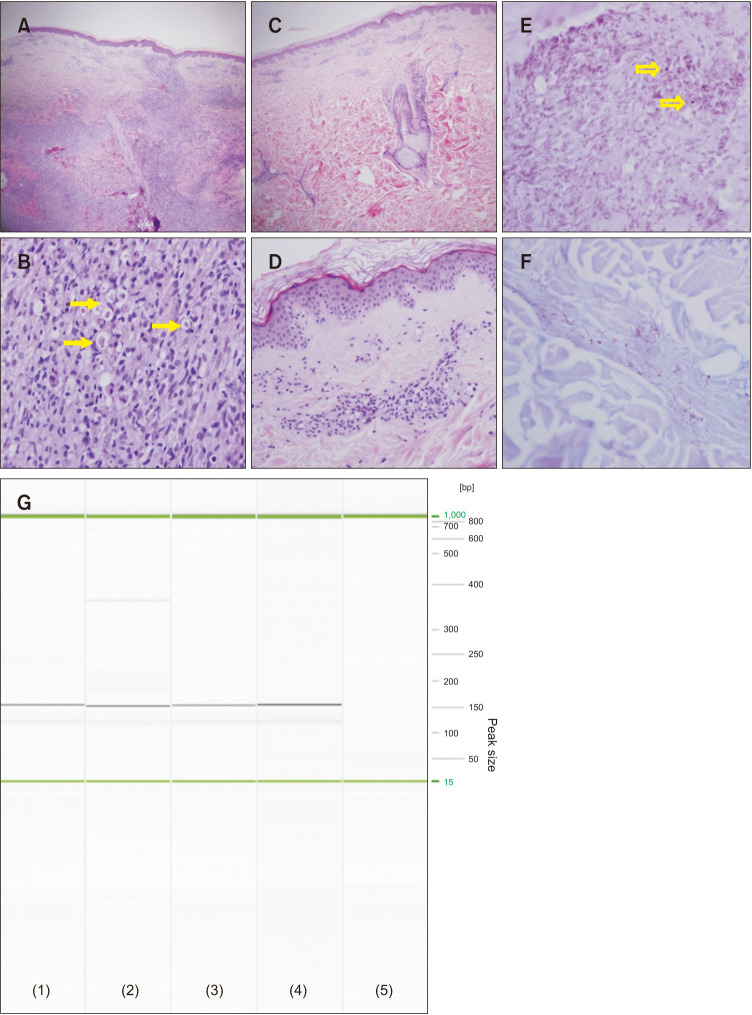根据活检部位不同组织学表现诊断新发麻风患者。
IF 1.5
4区 医学
Q3 DERMATOLOGY
引用次数: 0
摘要
本文章由计算机程序翻译,如有差异,请以英文原文为准。


Diagnosis of New Leprosy Patients through Various Histological Findings according to Biopsy Sites.
: An 81-year-old male had multiple erythematous to dusky patches on the trunk, arms, and legs for several years (Fig. 1A, B) and two violaceous nodules on the back with unknown onset (Fig. 1C). He had numbness of the hands and feet and edema of the hands and face during the previous six weeks. Punch biopsies were performed on the patch and nodule on the back. The nodule showed dense dermal infiltration by foamy histiocytes and lepra cells containing degenerated microbial components (Fig. 2A, B). The patch showed only superficial dermal perivascular and periappendageal lymphohistiocytic infiltration (Fig. 2C, D). Acid-fast bacillus (AFB) staining revealed that acid-fast bacilli was denser in the nodule than in the patch and some of the bacilli were clustered, forming globi (Fig. 2E, F). The patient was diagnosed as a new lepromatous leprosy patient based on clinical and histological findings. The patient was referred to the Hansen Welfare Association of Korea. Amplication of 154 bp Mycobacterium leprae-specific repetitive element (RLEP) was confirmed in PCR results of Hansen Welfare Association of Korea (Fig. 2G). The institution confirmed that the patient was
求助全文
通过发布文献求助,成功后即可免费获取论文全文。
去求助
来源期刊

Annals of Dermatology
医学-皮肤病学
CiteScore
1.60
自引率
6.20%
发文量
77
审稿时长
6-12 weeks
期刊介绍:
Annals of Dermatology (Ann Dermatol) is the official peer-reviewed publication of the Korean Dermatological Association and the Korean Society for Investigative Dermatology. Since 1989, Ann Dermatol has contributed as a platform for communicating the latest research outcome and recent trend of dermatology in Korea and all over the world.
Ann Dermatol seeks for ameliorated understanding of skin and skin-related disease for clinicians and researchers. Ann Dermatol deals with diverse skin-related topics from laboratory investigations to clinical outcomes and invites review articles, original articles, case reports, brief reports and items of correspondence. Ann Dermatol is interested in contributions from all countries in which good and advanced research is carried out. Ann Dermatol willingly recruits well-organized and significant manuscripts with proper scope throughout the world.
 求助内容:
求助内容: 应助结果提醒方式:
应助结果提醒方式:


